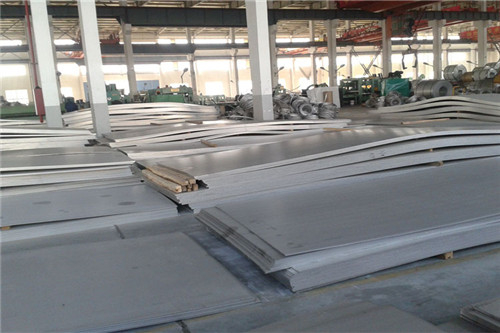
| 3/16" | 1/4" | 3/8" | 1/2" | 5/8" | 3/4" |
|---|---|---|---|---|---|
| 4.8mm | 6.3mm | 9.5mm | 12.7mm | 15.9mm | 19mm |
| 1" | 1 1/4" | 1 1/2" | 1 3/4" | 2" | |
| 25.4mm | 31.8mm | 38.1mm | 44.5mm | 50.8mm |
General Properties
Alloy 904L (UNS N08904) is a superaustenitic stainless steel that is designed for moderate to high corrosion resistance in a wide range of process environments. The combination of high chromium and nickel content, coupled with additions of molybdenum and copper, assure good to excellent corrosion resistance.
With its highly alloyed chemistry — 25% nickel and 4.5% molybdenum, 904L provides good chloride stress corrosion cracking resistance, pitting and general corrosion resistance superior to 316L and 317L molybdenum enhanced stainless steels.
Alloy 904L was originally developed to withstand environments containing dilute sulfuric acid. It also offers good resistance to other inorganic acids such as hot phosphoric acid as well as most organic acids.
Alloy 904L is easily welded and processed by standard shop fabrication practices.
Applications
Air Pollution Control — scrubbers for coal-fired power plants
Chemical Processing — process equipment for the production of sulfuric, phosphoric, inorganic and organic acids and the production of phosphate-based fertilizers
Metallurgical Processing — pickling equipment using sulfuric acid
Oil and Gas Production — offshore process equipment
Pharmaceutical Industry — process equipment
Pulp and Paper — processing equipment
Seawater and Brackish Water — condensers, heat exchangers and piping systems
Standards
ASTM........A 240, B 625
ASME........SA 240, SB 625
Corrosion Resistance
The high content of alloying elements in 904L gives the alloy exceptionally good resistance to uniform corrosion.
904L was originally developed to withstand environments containing dilute sulfuric acid, and is one of the few stainless steels that, at temperatures up to 95°F (35°C), provides full resistance in such environments within the entire concentration range of 0 to 100%. 904L also offers good resistance to a number of other inorganic acids, such as phosphoric acid and most organic acids. However, acids and acid solutions containing halide ions can be very aggressive, and the corrosion resistance of 317L, 317LMN and 904L may be insufficient.
Fractional distillation of tall oil often needs better material than 316L or even the more frequently used 317LMN. In these hot concentrated caustic solutions, the corrosion resistance is mainly determined by the nickel content of the material. With a nickel content of 25%, 904L has proven to be a good alternative to most conventional stainless steels.
Conventional stainless steels such as 304L and 316L are susceptible to chloride stress corrosion cracking (SSC) under certain conditions. Resistance to SSC increases with the increased content of nickel and molybdenum. Therefore, the higher performance austenitic stainless steels such as 904L have very good resistance to SSC. The table in the upper right corner shows resistance to SSC in a chloride solution under evaporative conditions. High performance austenitic steels and duplex stainless steels clearly outperform 316L.